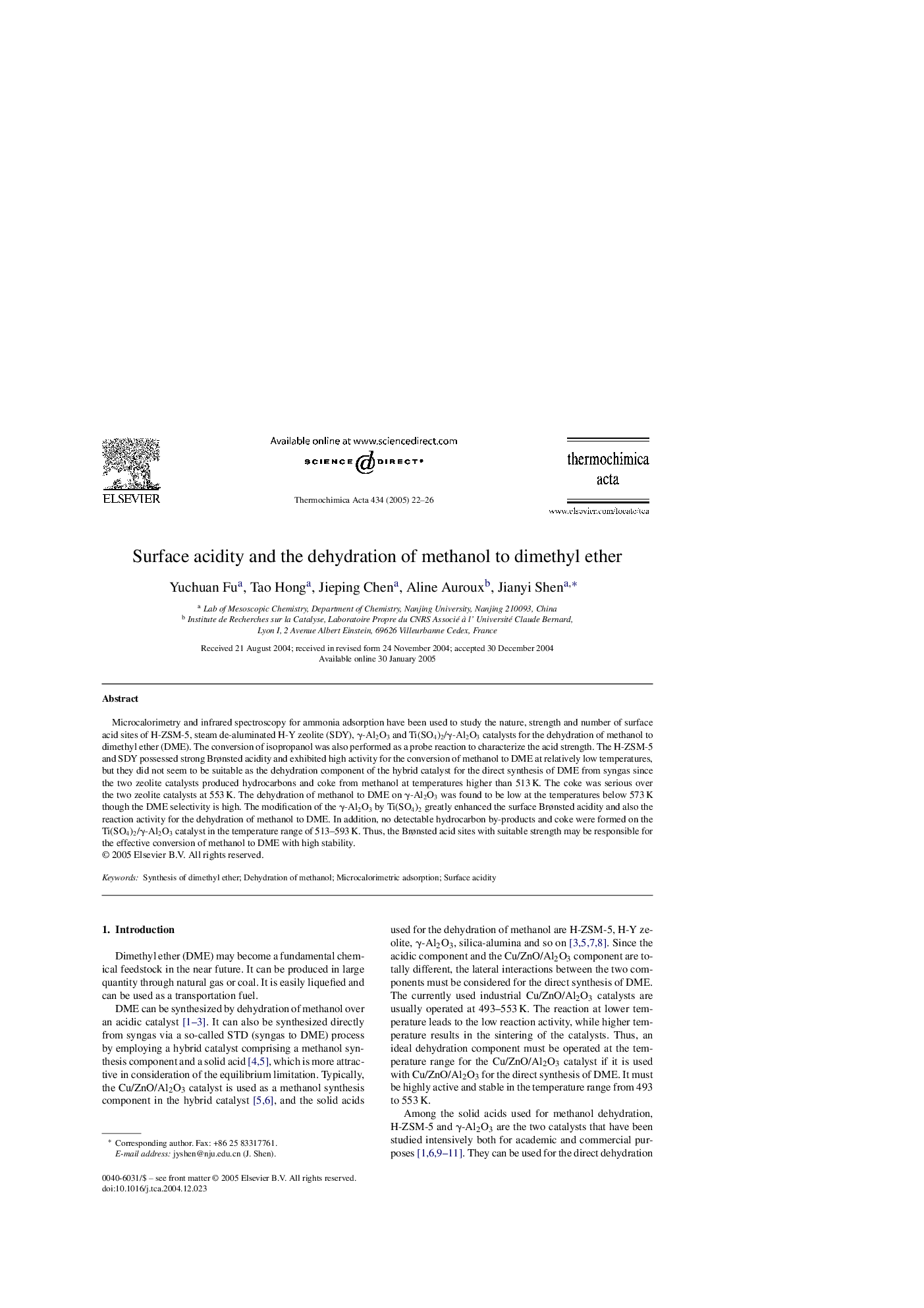| Article ID | Journal | Published Year | Pages | File Type |
|---|---|---|---|---|
| 9694018 | Thermochimica Acta | 2005 | 5 Pages |
Abstract
Microcalorimetry and infrared spectroscopy for ammonia adsorption have been used to study the nature, strength and number of surface acid sites of H-ZSM-5, steam de-aluminated H-Y zeolite (SDY), γ-Al2O3 and Ti(SO4)2/γ-Al2O3 catalysts for the dehydration of methanol to dimethyl ether (DME). The conversion of isopropanol was also performed as a probe reaction to characterize the acid strength. The H-ZSM-5 and SDY possessed strong Brønsted acidity and exhibited high activity for the conversion of methanol to DME at relatively low temperatures, but they did not seem to be suitable as the dehydration component of the hybrid catalyst for the direct synthesis of DME from syngas since the two zeolite catalysts produced hydrocarbons and coke from methanol at temperatures higher than 513 K. The coke was serious over the two zeolite catalysts at 553 K. The dehydration of methanol to DME on γ-Al2O3 was found to be low at the temperatures below 573 K though the DME selectivity is high. The modification of the γ-Al2O3 by Ti(SO4)2 greatly enhanced the surface Brønsted acidity and also the reaction activity for the dehydration of methanol to DME. In addition, no detectable hydrocarbon by-products and coke were formed on the Ti(SO4)2/γ-Al2O3 catalyst in the temperature range of 513-593 K. Thus, the Brønsted acid sites with suitable strength may be responsible for the effective conversion of methanol to DME with high stability.
Related Topics
Physical Sciences and Engineering
Chemical Engineering
Fluid Flow and Transfer Processes
Authors
Yuchuan Fu, Tao Hong, Jieping Chen, Aline Auroux, Jianyi Shen,
